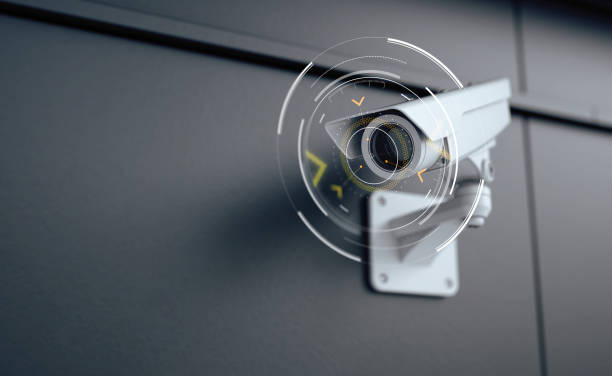Securing your home is a top concern in the modern world, and the role of closed-circuit television (CCTV) cameras in bolstering home security has become increasingly significant. Let’s explore the intricacies of CCTV cameras, the broader realm of home security, and the art of effective installation to create a formidable defense against potential burglars.
CCTV cameras serve as vigilant sentinels, providing real-time surveillance and a deterrent to potential intruders. The footage serves as invaluable evidence in the unfortunate event of a break-in. It aids law enforcement in identifying culprits and can be crucial in legal proceedings. Knowing that your home is under the watchful gaze of CCTV cameras provides peace of mind. It allows homeowners to feel secure and confident, especially during extended periods of absence.

Components of an Effective Home Security System
CCTV cameras are just one part of a comprehensive home security system. To create a robust defense against burglars, consider the following elements:
- Intrusion Detection Systems – Install sensors on doors and windows that trigger alarms when breached. This article clearly illustrates these systems, including motion detectors, window and door sensors, and glass break detectors.
- Smart Locks and Access Control – Upgrade to smart locks that offer enhanced security features. Access control systems with unique codes or biometric authentication add an extra layer of protection.
- Lighting Solutions – Adequate lighting is a potent deterrent. Install motion-activated lights around the perimeter of your home to deter burglars who prefer the cover of darkness.
- Alarm Systems – A monitored alarm system can quickly alert authorities during a break-in. Visible alarm signage further reinforces the notion that your home is under robust protection.
- Secure Entry Points – Reinforce doors and windows with sturdy materials. Consider security film for windows to make them more resistant to breakage.
- Landscaping Strategies – Maintain clear visibility around your property by trimming shrubs and trees. This eliminates potential hiding spots for burglars.
- Home Automation Systems – Embrace smart home technology that allows you to control security features remotely. From adjusting lighting to locking doors, these systems enhance convenience and security.
Strategic Placement of CCTV Cameras
The effectiveness of CCTV cameras relies heavily on their strategic placement. Consider the following tips for optimal positioning:
- Cover Entry Points – Install cameras near entry points such as doors, windows, and garage doors. This ensures comprehensive coverage of potential access points.
- Height Matters – Mount cameras at a height that makes them less accessible to tampering. This protects the equipment and provides a better vantage point for capturing faces.
- Cover Vulnerable Areas – Identify vulnerable areas around your property, such as blind spots or secluded corners, and ensure CCTV cameras cover these.
- Visible Deterrence – Place at least one camera in a prominent location. This is a deterrent, signaling potential intruders that the property is under surveillance.
- Consider the Lighting – Ensure that cameras are positioned to capture clear footage, considering lighting conditions. Infrared cameras are adequate for low-light or nighttime surveillance.
- Cover Perimeter – Extend coverage to the perimeter of your property. This enhances security and provides early detection of potential threats approaching from a distance.
- Focus on High-Risk Areas – If specific areas of your property are more prone to intrusion, such as a secluded back entrance, focus additional camera coverage on these high-risk zones. Consider seeking professional advice on security camera installation near me.

Selecting the Right CCTV System
Choosing the right CCTV system and CCTV Installation company involves considering your specific needs and the features that align with them. Here’s a guide to selecting an optimal system:
- Storage Capacity – Consider the storage capacity of the system. Choose between local storage options or cloud-based solutions based on your preferences and needs.
- Resolution and Image Quality – Higher resolution provides clearer images. Consider cameras with at least 1080p resolution for detailed footage.
- Field of View – Assess the field of view offered by each camera. Wide-angle lenses are ideal for covering expansive areas, while narrow lenses are suitable for focused surveillance.
- Day/Night Capability – Opt for infrared (IR) cameras for clear nighttime footage. Day/night cameras automatically adjust to varying lighting conditions.
- Remote Access and Connectivity – Choose a remote access system, allowing you to view footage from anywhere. Ensure compatibility with smartphones and computers for convenient monitoring.
- Camera Types – Choose between dome cameras for discreet indoor surveillance or bullet cameras for visible outdoor deterrence. PTZ (Pan-Tilt-Zoom) cameras offer flexibility in adjusting the field of view.
- Motion Detection – Systems with motion detection capabilities and instant alerts enhance proactive monitoring. This allows you to respond swiftly to potential threats.
- Ease of Installation and Afterservice – Opt for systems that are user-friendly and offer straightforward installation and after service. Professional installation may be necessary for complex setups.
Investing in a comprehensive home security system, with CCTV cameras at its core, is a proactive step toward safeguarding your home and loved ones. By understanding the strategic placement of cameras, selecting the right system, and considering privacy implications, you can create a formidable defense against potential burglars.






